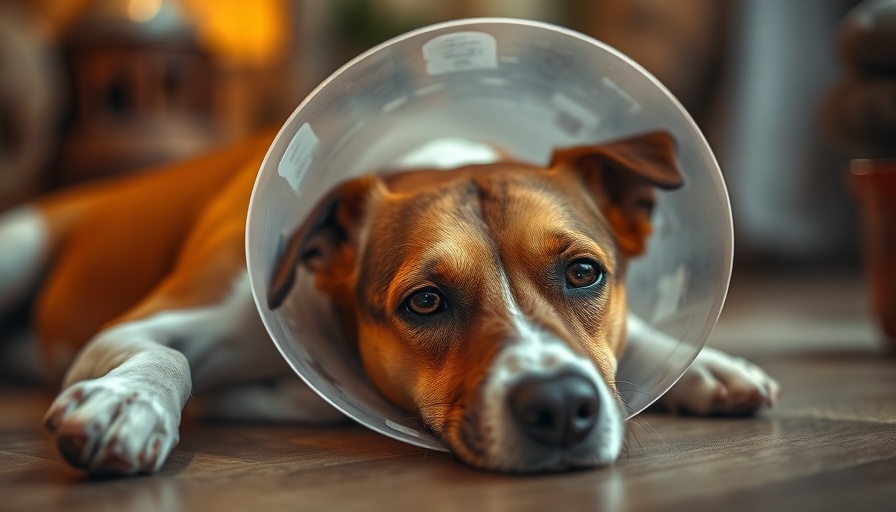
Understanding Post-Surgery Recovery for Dogs
When your beloved canine has undergone surgery, a cloud of relief often follows as they emerge from anesthesia. The immediate aftermath is a crucial time, as how you care for your dog during recovery directly impacts their healing journey. Most pet owners, preoccupied with the ordeal of surgery, often find themselves unprepared for the challenges of post-operative care. But fret not; with the right approach, patience, and a bit of love, you can ensure your furry friend returns to their playful self in no time.
The Importance of a Calm Environment
In the first few nights after surgery, it’s essential to create a low-activity environment for your dog. Expect them to be groggy, tired, and perhaps a bit disoriented due to the lingering effects of anesthesia. It’s common for dogs to feel exhausted, akin to waking up from a long sleep—your tranquility helps them settle in. Limiting their movement, enforced by a cone, can prevent any unnecessary strain on the healing incision.
Monitoring Your Dog's Health: The Urgency of Incision Care
Observing your dog's incision site is paramount. Normal signs include a clear, thin discharge for the first couple of days, but it’s vital to be aware of what constitutes an abnormal healing process. Red flags include excessive swelling, a foul odor, or significant bleeding. Meanwhile, bruising or slight redness around the incision might be evident, especially in light-colored dogs, and is generally not a cause for concern—but always keep in touch with your vet if you're uncertain.
Dealing with Digestive Changes Post-Surgery
Another common concern is the hesitation of your dog to poop after surgery. It's typical for dogs to go 4-5 days without defecating, particularly after they've experienced anesthesia, which can lead to constipation. Additionally, your dog's meal routine has been disrupted, leaving less food in the system to process. If your dog has not defecated after this period, it’s prudent to consult your vet. Gentle encouragement, like short walks around the yard, may aid in stimulating their digestive processes.
Providing Pain Relief and Comfort Measures
Medications prescribed post-surgery may include opioids or gabapentin, which can cause sedation. It’s normal for dogs to cope differently with these medications. While some may demonstrate increased energy, others may need a few days to adapt. Monitoring your dog for signs of pain can help determine the effectiveness of the prescribed medications. If your pet exhibits unusual behavior, consult your veterinarian to modify their treatment plan for optimal comfort.
Establishing a Daily Routine as Healing Progresses
As the days pass and your dog begins to regain strength and clarity, establishing a consistent routine can provide stability and reassurance. Controlled movement becomes key; short, supervised walks can help reintroduce them to their environment while encouraging gentle stretching of their muscles. Activities such as quiet play or short training sessions can also promote mental stimulation—always aligning activities with your vet’s recommendations to ensure safety.
Emotional Connection: Your Role In Their Recovery
The recovery process isn't just physical; it’s emotional too. Your presence and attention are invaluable. Engaging in calm, gentle interactions can foster a comforting environment. Petting them softly, calming words, or just being close can help soothe their anxious minds. Healing is a journey, and your dog depends on you for reassurance during this time.
Conclusion: Love and Patience are Key
Taking care of a dog after surgery is a comprehensive task that requires attention not just to their physical needs, but also to their emotional well-being. Monitoring their condition, addressing any concerns promptly, and providing a peaceful environment all contribute to a successful recovery. Your patience and love will go a long way in helping your furry friend heal and thrive.
 Add Row
Add Row  Add
Add 


Write A Comment